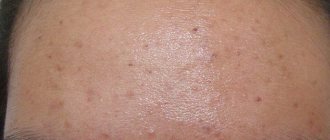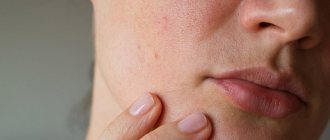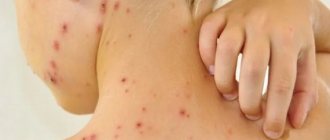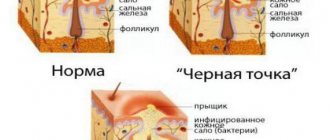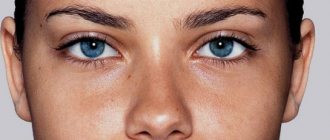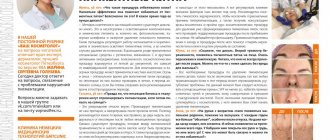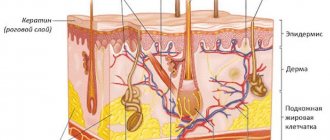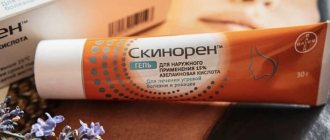Whitening creams
Before using a whitening cream containing mercury, consultation with a doctor is required, since uncontrolled self-medication can lead to very disastrous results: both mild cosmetic damage to the skin and more serious problems associated with allergic reactions are possible. In case of contraindications, products based on hydrogen peroxide or salicylic alcohol can be a worthy replacement for such creams. But they have one significant drawback - a short shelf life - after 10 days the preparations lose their whitening properties. Dermatologists recommend choosing whitening ointments based on fatty creams. It is better to cleanse the skin using cleansing lotions or sour milk. Washing with plain water during treatment is highly undesirable.
Phototherapy
A modern method that helps not only get rid of excess pigmentation on the skin, but also prevent its further appearance. A beam of light emitted by a special device is directed to the pigmented area of the skin for a certain time. Thanks to a given range of light waves, the effect occurs only on the spot, without affecting areas of clean skin. Usually, 3 sessions within a month are required to completely get rid of age spots. After the procedure, it is recommended to protect your face from direct sunlight.
Dark spots. Treatment and prevention
If you are familiar with age spots and a geographical map on the face, then this article is for you! The most frequently asked question about age spots:
Why did I get
a pigment spot ?
Let's start with the fact that, of course, there are different spots in this:
They can be congenital - like freckles; there are local, fairly large pigment spots that appear in the first years of life. There are pigment spots that appear on the face over time, with age. And my patients are the ones who care about them.
Why do age spots appear?
Pigment spots can be a sign of internal diseases and you should consult an endocrinologist and therapist to rule out a possible disease, for example, the thyroid gland. There are also diseases in which age spots appear quite often - these are diabetes mellitus and oncopathology. In these diseases, pigment spots in patients are in 10th place and, first of all, people treat the underlying disease.
Most often, pigment spots appear against the background of hormonal imbalance. One of the most common causes of age spots on the face is a hormonal factor:
- pregnancy
- inflammatory diseases of the ovaries
any contraceptives that have hormonal activity:
- patch
- taking oral contraceptives (pills)
- intrauterine device
One of the reasons for the appearance of age spots on the face is skin trauma. After a rash, when we squeeze pimples on the face, a stagnant spot appears, and then a pigment spot forms. Spots may appear after procedures if these were traumatic procedures. For example: burn, peeling or laser procedure.
If the skin is prone to the appearance of pigment and in addition there are additional factors in the form of hormonal imbalance, then a pigment spot will not hesitate to appear on your face. Post-traumatic pigmentation mainly appears not on light skin, but on skin of the third, fourth and fifth phototypes. For those people whose skin does not turn red in the sun, but immediately gets a good, even tan. These people have a very high risk of developing post-inflammatory pigmentation. Remember this!
Video - Why did a pigment spot appear?
Video with a story from a cosmetologist about the appearance of pigment spots on the skin
Another reason is taking photosensitizers.
Photosensitizers - what are they?
Photosensitizers are drugs that, when taken orally or applied to the skin, increase the skin's sensitivity to sunlight. That is, by increasing the skin's sensitivity to sunlight with the help of these drugs, you risk getting age spots.
What are the types of photosensitizers?
They can be external. Ordinary essential oils that are included in various creams. For example: essential oil of bergamot, clove, grapefruit. If you are taking any medications orally, be sure to read the instructions. It should state that this drug may make your skin more sensitive to sunlight. Could these be tetracycline antibiotics? fluoroquinolones. These could be vitamins B1, B2, iron, zinc, copper, which you take orally in some complexes.
Never forget! The main stimulator and provocateur of age spots is solar radiation. You may well get a pigmented spot simply because you have a genetic predisposition. Have you sunbathed a lot? Do you spend a lot of time in the solarium? If you do not control the flow of sunlight to your skin with creams with filters, then you can fully expect that, if not at 20-30 years old, then certainly at 40-45 years old, you will get a decent-sized pigment spot, which will be very difficult to deal with. get rid of.
Interesting fact about the modern appearance of age spots
Every day we communicate more and more closely with our phones, smartphones, computers, tablets. For many, this is a full eight-hour workday in front of a computer. You must know! Electronic gadget screens and computer screens, smartphones and tablets emit a special light - blue. It is also called blue. This is the main spectrum of radiation and light provokes chronic, low-grade inflammation in the skin (with prolonged and regular exposure). This is one of the reasons for the appearance of age spots! Not acne or some kind of inflammation, but a clear acceleration of skin aging and the appearance of various neoplasms, including age spots.
Video - Are pigment spots caused by a smartphone?
One of the reasons for the appearance of age spots on the face. Modern conditions contribute to skin pigmentation
Smartphone screens and age spots
My friends! If you think that with uncontrolled and unlimited communication with your mobile phones, nothing will happen to your skin, you are very mistaken!
How do gadgets affect our skin? How can we minimize exposure to radiant screens?
Our lives are very closely connected with various mobile phones, tablets and computers. Some people have been sitting in front of a screen for decades and have no idea how harmful this screen can be to their health. My topic is skin and I will talk primarily about it.
There is a main spectrum of radiation from computer screens, tablets and phones. This is cyan or blue light. It has a very harmful effect on the skin. With prolonged regular exposure, sluggish inflammation occurs in the skin and this leads to premature aging of the skin and the formation of pigment spots on the skin.
This may not happen right away. You may not notice anything for 10 years, but in the future, when a problem arises, it will be very difficult to deal with it. usually very complex and of course there are negative effects on the entire body:
- deterioration of sleep
- risk of cardiovascular disease
- deterioration in health
- fatigue
First of all, you need to limit your time with monitors and phones. If you sit in front of a computer all day, then you don’t need to be stuck on your phone all night. For “smartphone maniacs” there are special blue blocker glasses. They protect your eyesight from screen blue light. Phones and tablets have special modes, they are called differently. You just need to look for this vision protection mode. Reading mode and blue light filter. The blue filter will help you communicate safely with your gadget.
If we talk about the skin, then there are no creams with special filters against blue or blue light. But, you can include in your home care creams and lotions that contain antioxidants to protect the skin and block free radicals - they prevent accelerated aging and the formation of age spots. And of course, you need to use modern products in peptide complexes that properly protect the skin.
Traditional methods
1. Chop fresh parsley, add 1 liter of boiling water, leave for several hours. Strain the resulting cooled infusion through cheesecloth and wipe your face twice a day. You can also moisten a napkin with the infusion and keep it on your face for at least a quarter of an hour, then wash with cool water. 2. Lemon juice (50 g) in half a glass of water, wipe your face throughout the day. You can also mix potato starch with lemon juice, apply the resulting mask to your face for 15 minutes, then rinse with cool water. 3. Peel a medium fresh cucumber, pour a glass of hot water over the peel and leave for 5-6 hours. Wipe pigmented areas with cucumber infusion throughout the day. You can also wipe your face with regular fresh cucumber juice if the pigmentation is shallow. 4. Mix 10 g of vegetable oil with 10 ml of milk and dry bran. Add grated medium-sized raw potatoes to the resulting mixture. Apply the mask to the face for 15-20 minutes. 5. Cut a medium-sized onion into several pieces. Apply a thin layer of cream to your face, then wipe the skin with the released onion juice. Wait until dry, rinse with cool water. 6. Mix bodyagu and any cosmetic clay in equal proportions, add warm water and stir until the consistency of sour cream. Wash off the mask with cool water after a quarter of an hour. You can also mix 30 g of bodyaga and 20 ml of hydrogen peroxide and apply to age spots. Wash off after 10 minutes. 7. Squeeze the juice from the celandine onto a cotton pad or gauze and wipe problem areas on the face and neck. 8. Apply a 4% salicylic acid solution to a cotton pad and apply to age spots for 10 minutes (no more). Rinse with water. Before you begin to remove age spots yourself, you should consult a doctor to find out the reasons for their origin, as well as to identify contraindications.
Types of skin pigmentation disorders
Lentiginosis.
A brownish pigmented spot on the skin that is the result of increased melanin deposition and an increased number of melanocytes. Color can vary from light brown to black. Solar lentigo (caused by sun exposure) typically appears as multiple lesions.
Keratosis
Formation of horny tissue. May be flat or raised. Only colored flat lesions will respond to IPL light therapy.
"Coffee" stains
The lesion has a characteristic uniform shade of café au lait, from light to dark brown. May appear as a single spot or multiple spots. They may be present at birth but usually develop in early childhood and increase in size with age
Hemosiderin
Hyperpigmentation, which is usually a consequence of chronic venous insufficiency due to post-inflammatory pigmentation after sclerotherapy.
Becker's nevus
A hyperpigmented, slightly raised area, light to dark brown nevus with hair.
Nevus Otta/Itta
Limited, unilateral, mottled, blue to brown lesions affecting the skin, sclera, and mucous membranes. They develop predominantly on dark skin.
Freckles
Small pigment spots of a reddish, flesh-colored or brownish color, localized on the cheeks and nose, less often - throughout the face, back, and arms. Caused by genetic predisposition.
A separate item should be highlighted such a phenomenon as rosacea . Some patients mistakenly classify it as hyperpigmentation, but this is not entirely correct. Rosacea is an extensive vascular network of dilated capillaries, having a reddish or bluish tint. Like pigment spots, it is successfully eliminated using hardware procedures, but their mechanism of action differs from the correction of pigmented melanin formations.
Important! Hyperpigmentation caused by pathological processes in the body should be subject to systemic therapy. For defects caused by liver disease, hormonal imbalance and other health problems, you should contact a gastroenterologist-hepatologist, endocrinologist and other specialized doctors.
Cosmetological correction is most relevant after the therapy has been completed, when the cause of the defect has been eliminated.
